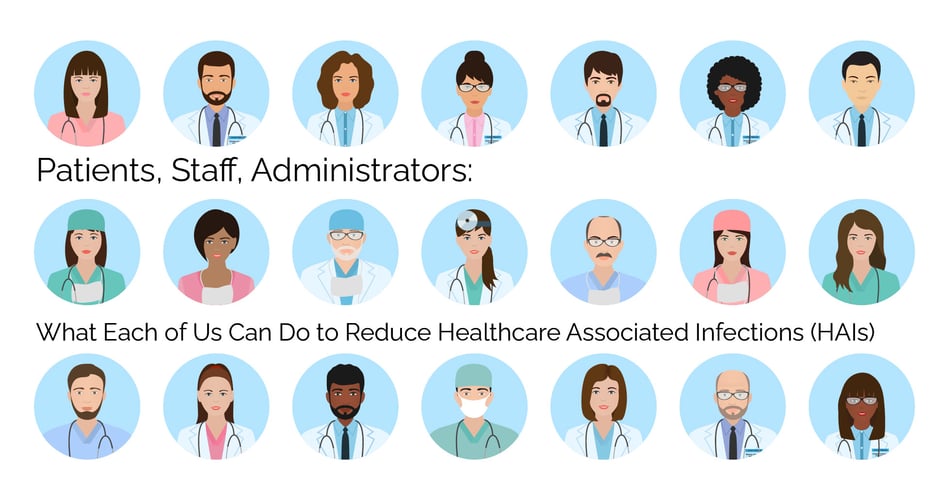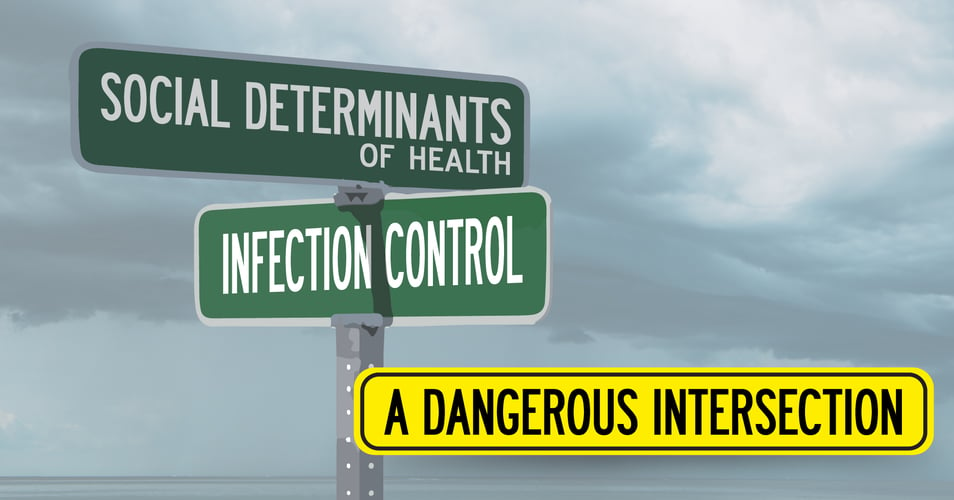Patients, Staff, Administrators: What Each of Us Can Do to Reduce Healthcare Associated Infections (HAIs)

We hear so often how "we all have a role to play in reducing healthcare associated infections." From washing our hands to advocating for policy changes, it can often feel overwhelming. One way to make our impact more practical is to identify the things that we are uniquely able to do in our current position. In a series of posts starting today, we will explore the actions we can take to reduce infections most effectively based on our professional role in healthcare. We hope these ideas serve as a springboard for your own choices in the future.
Patients
While patients by no means carry the bulk of the responsibility to avoid infections, there are some things that those receiving medical care can do to help avoid HAIs.
CHOOSE WISELY One of the very first things a patient can do is choose their health care facilities wisely. Today, there are numerous online resources that detail the infection rates at health care facilities, including long term care facilities. Go online and compare infection rates! See if they employ the latest, proven innovations to reduce HAIs, such as the use of biocidal surfaces. If you have a choice in where you can receive medical care, this is an excellent first step.
FOLLOW DIRECTIONS and ASK QUESTIONS Once you are receiving care, it is important to follow all the protocols that you are given prior to a procedure or treatment. However, it is equally important to ask questions! Ask your health care team specifically what you can do to avoid getting an infection. Ask for clarification, restate what you understand to check for accuracy, and take notes. Share what you learned with your caregivers.
ALLOW SCREENINGS If your health care team asks if they can screen you for pre-existing infections, allow them to do so. This is their way of knowing what pathogens you may have on your skin or in your respiratory tract that are not causing you any problems now, but could become problematic after your procedure.
KEEP ASKING and REPORT SYMPTOMS Once you have completed your treatment and are in recovery, your work continues! There are a few things that you should continue to ask your medical team about to make sure that you are not receiving treatment passed when you need it: antibiotics, catheters, and other indwelling devices are the main examples. You can ask your doctor if you still need a catheter every day, if necessary! In addition to asking questions, be sure to report symptoms to your entire health care team, from nurses to physicians. Don't assume that your medical team has a chance to communicate effectively.
ALLOW CLEANING When janitorial staff, called Environmental Services, enters your room, always allow them to clean. Some patients find an inconvenient or awkward to have environmental services cleaning While they are in the room and ask them to come back later. Don't do this! There is no way to guarantee that they will have a chance to come back, and that means that disease causing pathogens will remain in your room for many hours, infection.
SELF ADVOCATE Speak up for yourself during your medical care. If necessary, ask a loved one to speak up for you - the important thing is that someone communicate effectively your needs and concerns. Self-advocacy can be hard. It's awkward to ask some questions, report some symptoms, or ask your medical team to wash their hands or consider removing a catheter. A friend or loved one can be a great source of support in these situations, either asking for you, giving you a way to practice what you will say, or just being there as you speak for yourself. Self-advocacy sometimes applies to your friends and loved ones, too. Make sure they wash their hands, wear PPE, and follow the hospital directives about what you can have in your room, what you can eat, and how much rest you need. (This can be the hardest self-advocacy of all. In these cases, you can ask your nursing team to play "bad cop"!)
We hope this brief overview of what you can do as a patient to avoid HAIs was helpful. In our next post, we will look at what healthcare workers can do as individuals to avoid patient HAIs, and finish up the series by addressing hospital administrators. Share your thoughts in the comments and let us know what you do to avoid HAIs!
![EOScu Logo - Dark - Outlined [07182023]-01](https://blog.eoscu.com/hubfs/Eoscu_June2024/Images/EOScu%20Logo%20-%20Dark%20-%20Outlined%20%5B07182023%5D-01.svg)

![[infographic] HAI Reduction Checklist - Patients Download and share!](https://no-cache.hubspot.com/cta/default/216314/interactive-178397725595.png)



